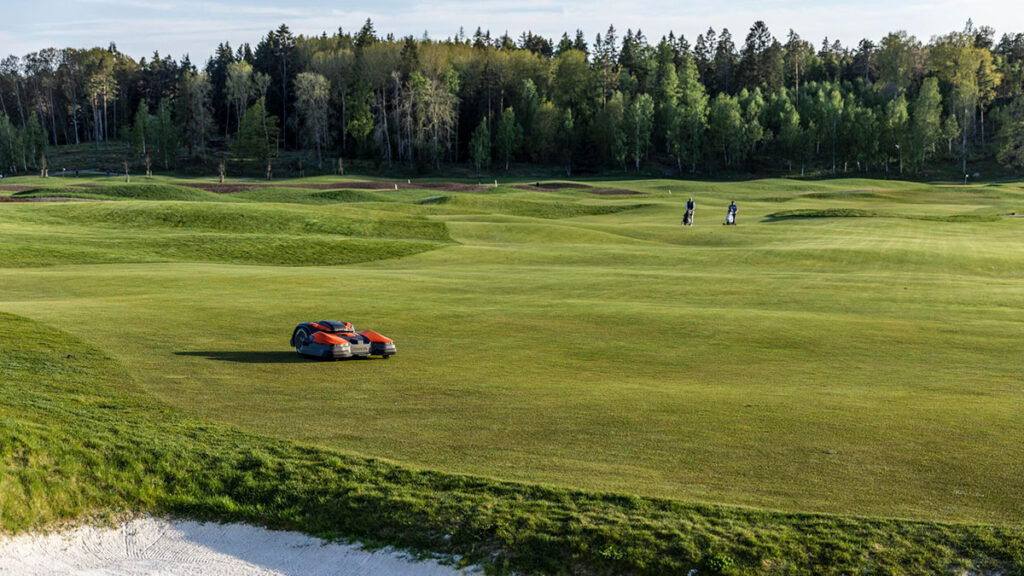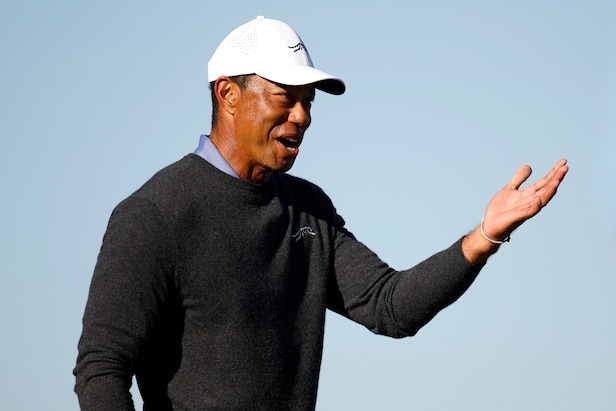Business Of Golf: No More Missed Cuts – Australian Golf Digest

- by Admin
- April 24, 2024

A peek into the revolutionary world of robotic-mower turf maintenance
Husqvarna Group has built a formidable reputation as a Swedish manufacturer of outdoor power tools, including chainsaws, brushcutters and garden tractors. In recent years Husqvarna has pioneered technology in robotic lawn mowing, establishing inroads into the European turf industry as well as residential markets.
In 2022 Husqvarna released the CEORA, an automated robotic mower without the need for physical wires. As it enters the Australian market, president Husqvarna Forest & Garden Division Glen Instone explains how the CEORA robotic lawn mowers are revolutionising turf maintenance.
▶ ▶ ▶
Can you give us a brief overview of the Husqvarna story?
We started in 1689. We’re 335 years young this year. So it’s pretty amazing, the journey. There are not many companies which have that level of background and heritage. Of course, with that comes a lot of change or transformation. The H logo you see in the Husqvarna logo represents a gun sight. We started off making guns for the Swedish military.
We went into things like bicycles, motorcycles. We’ve been in washing machines and food-processing equipment. How we got into the outdoor power scene is, if you think about a two-stroke engine powering a motorcycle, in effect it’s a chainsaw if you take that off. So the motorcycle and chainsaw have some connections there when we go into the outdoor space in the ’60s and ’70s. And then through acquisition, we’ve been building up the outdoor offering.
As I said, we started off largely in outdoor-powered equipment and, therefore, lawnmowers, garden tractors, chainsaws, brushcutters and what you Aussies call whipper snippers (trimmers).
In 1995, which has become quite an iconic year for the group, we launched a robotic lawnmower [when] we were at the time part of the Electrolux group.
We really started getting some traction into robotic lawn care in the mid-2000s, particularly in markets like Sweden, Switzerland, Netherlands, Belgium. These markets were early adopters of robotic lawnmowers, to the point in Sweden today about 50 to 60 percent of the money spent in the residential garden is spent on robotic lawn care. So for every 10 Aussie dollars spent in the garden, five to six dollars is spent on robotic lawn care in Sweden.
Fast-forward to 2018, we launched a product into the professional space – a machine that was capable of cutting 5,000 square metres. In 2019, we released a product, which we called EPOS. It was our Exact Positioning Operating System. In layman’s terms, it’s a GPS system. [So then] we had this breakthrough into the professional space, because now we had a machine that was capable of being programmed.
Fast-forward two years, 2021/2022, we launched what we called CEORA. It’s a large machine. It’s based on the same pattern, the same footprint, but it’s a much more complex machine. To put it into context, a robotic lawnmower would have about 400 components in it. A CEORA unit has 1,152 to 1,200 components, like three times the complexity in this. It’s like a mini car. So this makes this machine capable of cutting up to 75,000 square metres. We officially market 50,000 square metres, which would be nine to 10 soccer fields.
▶ ▶ ▶
What’s your point of difference compared with traditional cutting methods?
Our machine can be cutting 24/7, it can be cutting overnight, it can be cutting in the dark. We’re actually displacing a pain point, which is labour.
So a 24/7 operation, no direct emissions, extremely low noise, much safer, but ultimately the grass quality is better. And why do I say that? There are a lot of studies that prove this is the case. The roots of the grass will become much longer because it’s actually self-fertilising. It’s not adding a fertiliser to the grass, it’s constantly taking off the top millimetre, two millimetres of the grass, and that self-mulches into the ground and becomes a self-fertiliser.
We now have machines capable of cutting down to 10 millimetres. That’s not enough for greens [putting surfaces], I know that. All I’ll say is, watch this space.
One main feature of our professional models is now also available for selected residential models. As we had five to 10 years ago, they would cut in any direction, so it’d be a bowling-green finish. But it wouldn’t cut systematically in stripes, or patterns, or chequers, or anything like that. We now have systematic cutting. Systematic cutting basically says you can make it do stripes, squares, wherever you want.
We’ve got some great testimonials [from] some of the larger golf courses. Philadelphia Cricket Club [the oldest country club in America and host of the 1907 and 1910 US Opens]… they’re using our products. We have places like Congressional that are using this machine. We’ve got 31 of the top 100 courses in the US now using our product.
▶ ▶ ▶
Look at the way Tesla is changing the motor vehicle space. Every day you walk out on the street, you see another one on the road. It feels as though it could be a similar sort of process happening in the industry of turf maintenance?
Absolutely. When I was in Australia a couple of weeks ago, I came back very positive, [not only] from the internal team having embraced this, but actually a lot of municipalities. I saw it running on golf courses, a lot of the ovals were using this, a lot of the sports stadiums were starting to use it, and even some of the private schools.
I think this is a fantastic solution that we have an opportunity now that we need to capitalise on from a sustainability perspective, from a 24/7 operation, from it working overnight and having a golf course pretty much ready for tee-off time at 6am – only the greens to take care of before tee-off. I think it makes a lot of people’s lives easier.

▶ ▶ ▶
How does the GPS work in terms of a stray golf ball that happens to be in the path of the cutting lines? What happens when it approaches the ball? Does it go around? Does it stop? Does it go straight over it?
If it went over it, it wouldn’t cause a problem. But with object detection, we’re moving the boundaries all the time in terms of technology. We have radar technology coming in, lidar technology and vision technology. These are things which are here and now in many applications, adjacent industries.
As the market leader in robotics, we also need to make sure we stay extremely relevant. So we’re adding features all the time. And through machine learning and AI, across object detection and avoidance is going to be very, very key.
So over time – I’m talking 12 months – we’re going to have much more features that will really address what you say. But today, if it saw [a stray golf ball], it would slow down, when it feels an object it would go extremely slow over that or go around it. But over time, I expect it absolutely goes around it.
▶ ▶ ▶
How are you pitching the CEORA to golf clubs? Are you giving them an opportunity to trial it – try before they buy and see it in action?
That’s exactly what we’re doing. Very rarely do we go and pick up the product. The last thing we want is people to be disappointed with it.
We call it hyper-care, if you like, white-glove treatment initially, how we have our own service technicians going out and installing and babysitting the product through the installation process.
Getty images: mark brake
Brought to you by:

The Latest News
-
December 22, 2024Tiger Woods’ son Charlie makes a hole-in-one in the final round of the PNC Championship – Australian Golf Digest
-
December 22, 2024Tennis’ love match: Meet ‘Aussie’ Matteo Arnaldi and his Melburnian girlfriend
-
December 22, 2024GEORGIE PARKER: McSweeney was McStiff to get axed
-
December 22, 2024Chris Eubanks picks the ATP player he considers a real dark horse to win the Australian Open
-
December 22, 2024Time for the Swedish chef: Ikea’s furniture profits are down in Australia, but food sales are booming





